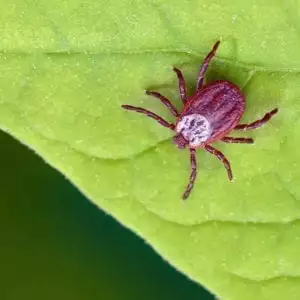Why Are Ticks on Dogs & Cats So Dangerous?
Ticks are arachnids that can carry a number of diseases, which they can transfer to their host during a blood meal. The most well-known of these diseases is Lyme disease, which is a recent newcomer to south central Indiana, along with its host, the deer tick. The deer tick (or black-legged tick) was once only found in the northwest part of our state as well as areas south and east, but in recent years, they have become prevalent all over the state. Unfortunately, Lyme disease isn’t the only illness a tick can transmit. Rocky Mountain spotted fever, ehrlichiosis, and anaplasmosis are also dangerous diseases that can threaten our health and the health of our pets. For this reason, tick protection is an essential part of your pet’s preventive care plan (and important for your human family, too!).
How to Prevent Tick Bites
The best form of medicine for tick-borne illnesses is to prevent them altogether. The first thing is to understand how ticks find their hosts. Ticks do not fly or fall from trees. They crawl to the tips of tall grass and leaves of brush and shrubs where they lie in wait, “questing.” While questing, they can sense the approach of a potential host and will attach if the host brushes up against their position. Some will bite their host immediately if they land on skin, while others will crawl around and look for an opportune place to attach. To prevent ticks from biting, follow these steps:
- Administer parasite prevention to your pet according to the medication’s directions. Many preventatives are monthly. These protect your pet by deterring ticks and will even kill a tick that bites before it has the chance to transmit disease.
- If you’ll be hiking in an area that’s known to have ticks, it’s important to wear long sleeves and pants, preferably light-colored so you can see any ticks that have hopped aboard more easily.
- Treat your clothing with permethrin and/or apply insect repellant to further deter ticks.
- Clear your yard of any areas where ticks might enjoy questing including brush, tall grass, and leaf litter.
- Check yourself and your pet for ticks frequently when outdoors and again after you get inside. Take a shower soon after your outing to thoroughly check for ticks and be sure to run your clothing in the dryer at high heat to kill any ticks you missed.
Safe Removal of Attached Ticks from Your Dog or Cat
If a tick does attach to you or your pet, it’s important to remove it as soon as possible. The longer the tick is attached, the more likely it is to transmit disease. Remove it safely with these steps:
- Protect your hands with latex gloves or even a paper towel to avoid touching the tick directly.
- With fine-tipped tweezers, grasp the tick as close to the skin as possible and pull straight up with steady pressure.
- Dispose of the tick by flushing it down the toilet or placing it in a sealable container for identification and/or testing.
- Monitor the bite site and watch your pet for signs of illness.
- If you or your pet develop any kind of sickness following a tick bite, seek medical help immediately. At the veterinarian, be sure to let us know your pet was recently bitten by the tick and tell your own doctor the same thing if you feel ill as well.
For further information about tick bites, the illnesses they spread, and tick protection, please contact our animal hospital at (317) 900-7723.

